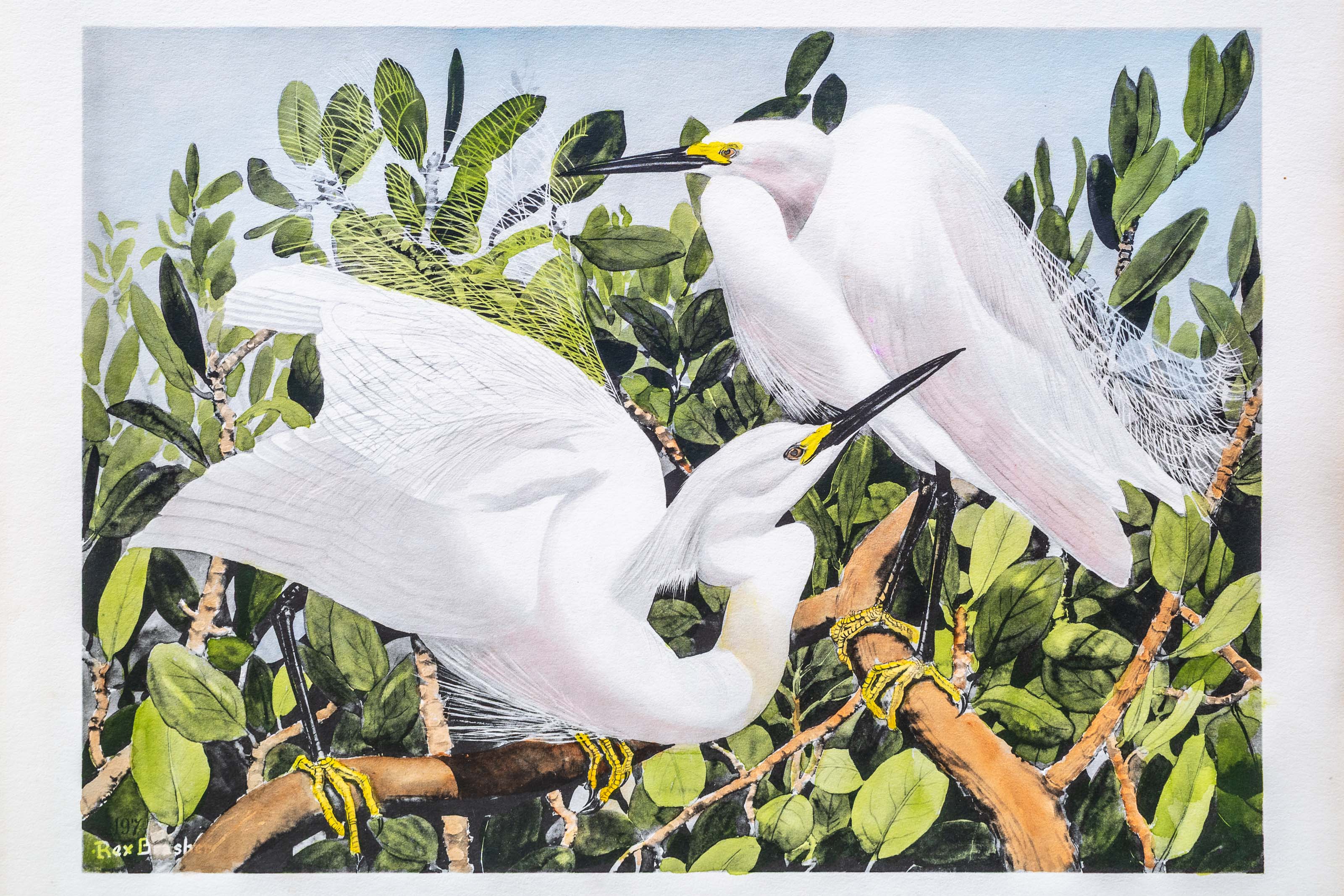
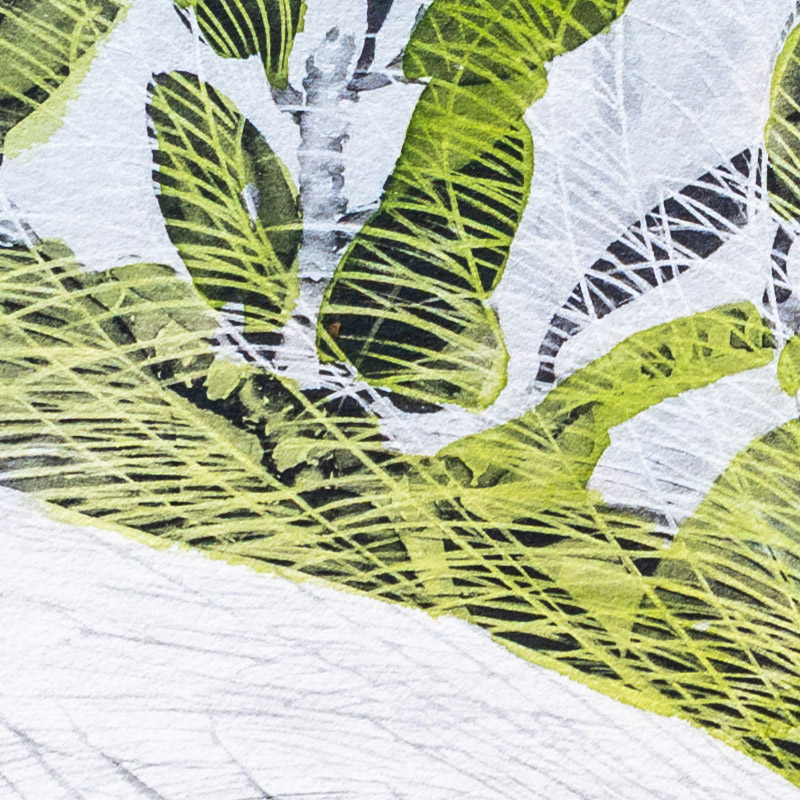
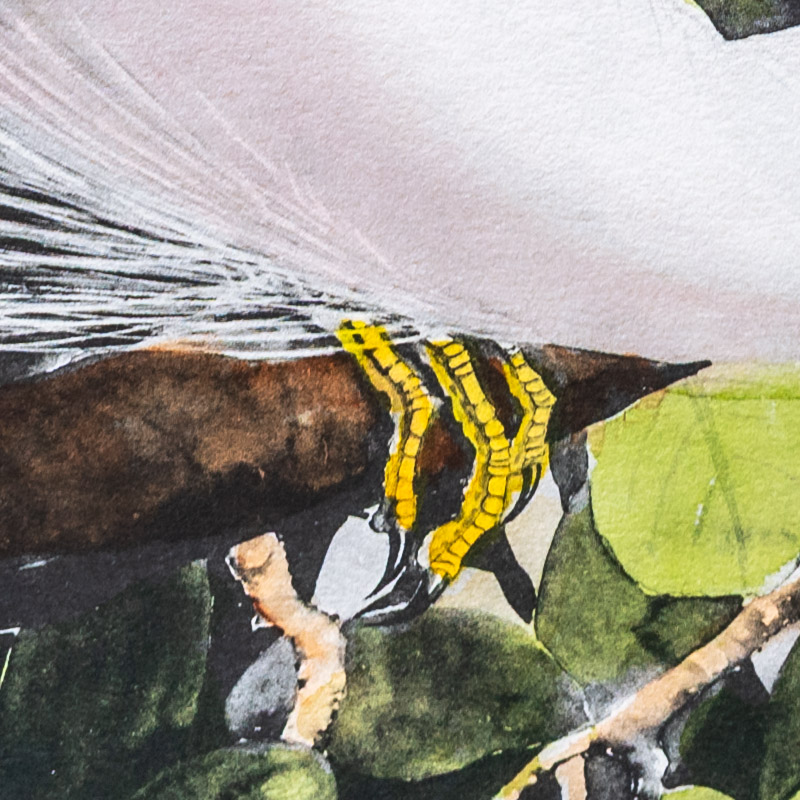
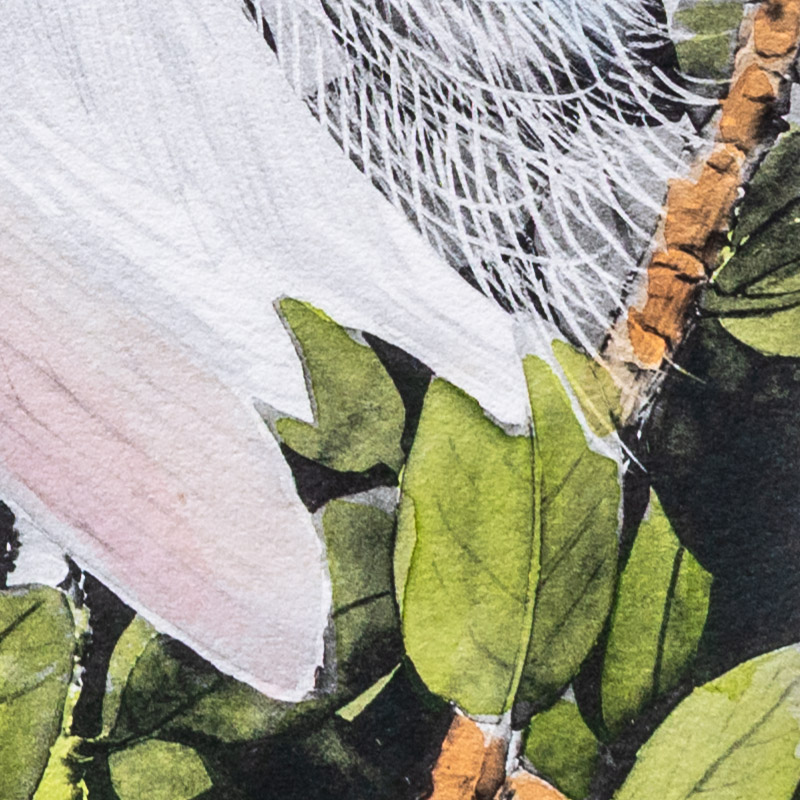
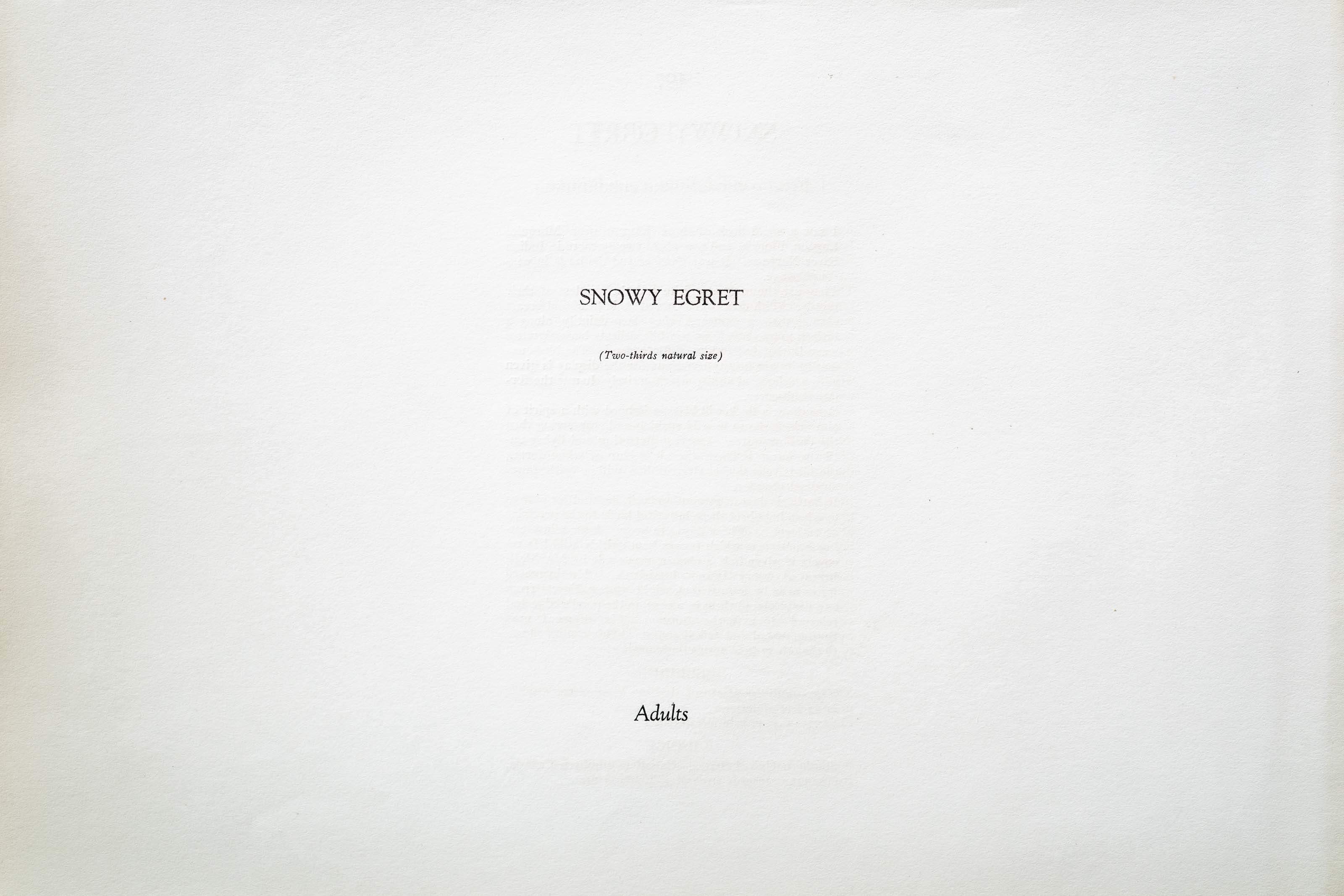
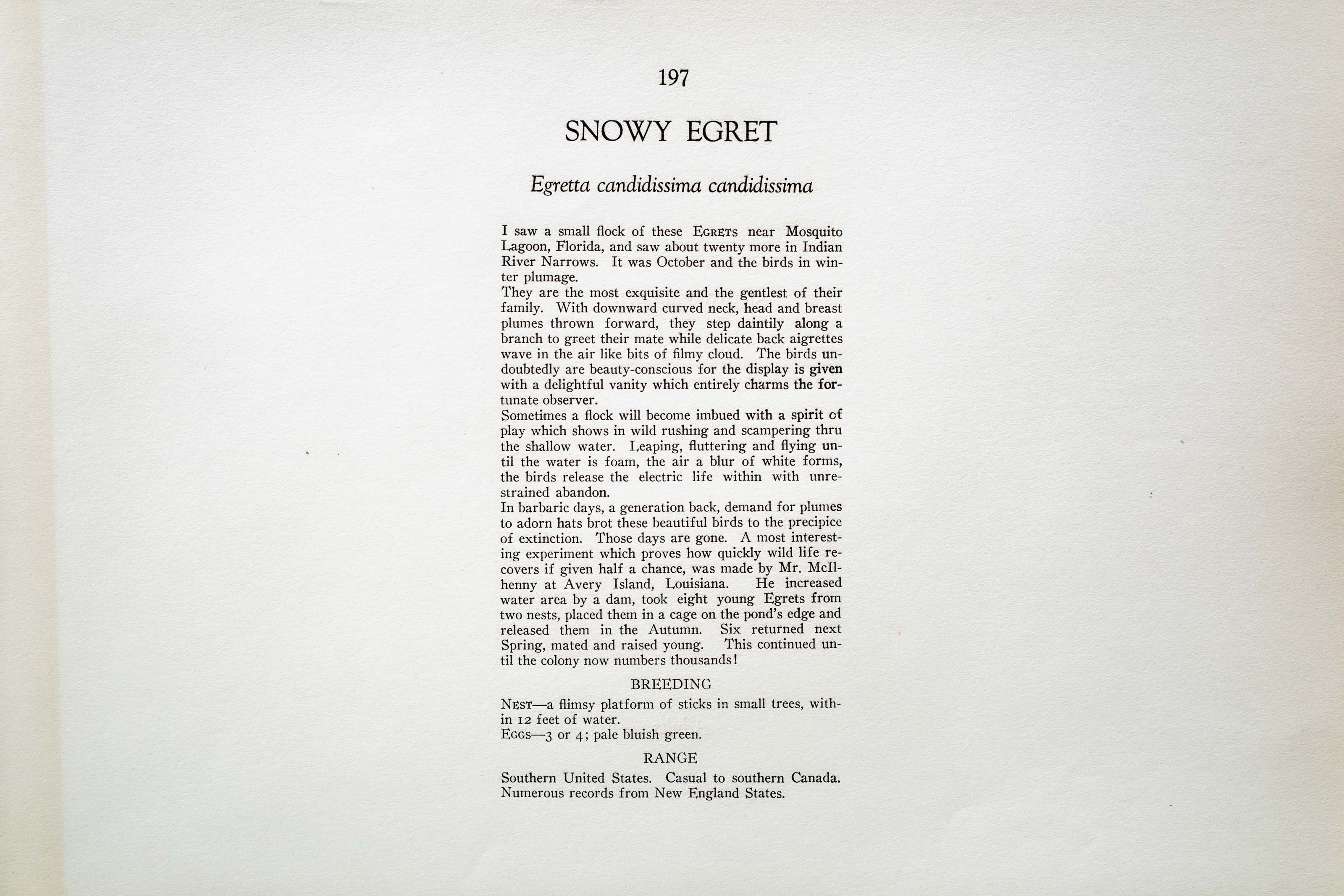

Unknown
1930
3
197
A team of dedicated board members, volunteers, and student interns has published every page in Volume 9. This volume includes 360 images of paintings and lyrical descriptions of birds, now available online for everyone to enjoy anywhere in the world. This is a monumental task. Each volume requires approximately 400 hours to photograph, edit, transcribe, catalog, and publish online. We need your support to complete this work.
If you're tech-savvy, have a good eye, are meticulous with details, and love structured data, please consider volunteering by emailing us at hello@rexbrasher.org.
We encourage all bird lovers and supporters to consider a monetary donation to support our mission to make Rex's work available for everyone. You can provide a one-time or recurring donation online.
I saw a small flock of these EGRETS near Mosquito Lagoon, Florida, and saw about twenty more in Indian River Narrows. It was October and the birds in winter plumage.
They are the most exquisite and the gentlest of their family. With downward curved neck, head and breast plumes thrown forward, they step daintily along a branch to greet their mate while delicate back aigrettes wave in the air like bits of filmy cloud. The birds undoubtedly are beauty-conscious for the display is given with a delightful vanity which entirely charms the fortunate observer.
Sometimes a flock will become imbued with a spirit of play which shows in wild rushing and scampering thru the shallow water. Leaping, fluttering and flying until the water is foam, the air a blur of white forms, the birds release the electric life within with unrestrained abandon.
In barbaric days, a generation back, demand for plumes to adorn hats brot these beautiful birds to the precipice of extinction. Those days are gone. A most interesting experiment which proves how quickly wild life recovers if given half a chance, was made by Mr. McIlhenny at Avery Island, Louisiana. He increased water area by a dam, took eight young Egrets from two nests, placed them in a cage on the pond's edge and released them in the Autumn. Six returned next Spring, mated and raised young. This continued until the colony now numbers thousands!
NEST — a flimsy platform of sticks in small trees, within 12 feet of water.
EGGS — 3 or 4; pale bluish green.
Southern United States. Casual to southern Canada. Numerous records from New England States.